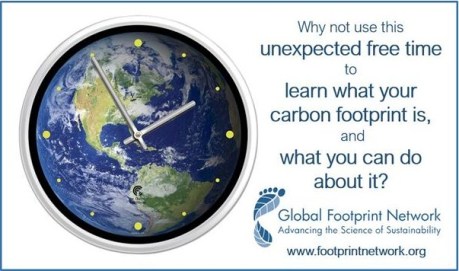The most important selfies ever
April 21, 2020
The most important selfies ever
Earth Rise, The Blue Marble and the Pale Blue Dot might be the three most important ‘selfies’ of all time. Here are their stories.
On December 24, 1968, Apollo 8 astronaut Bill Anders happened to glance out the window of his spacecraft just in time to see Earth silently appearing over the distant moon horizon (an event beautifully recreated with actual audio in this NASA video). He and his crewmates scrambled to capture the moment. Their image, Earth Rise, was seen by millions, and almost overnight generated an outpouring of awe for our planet and concern for its care. The first Earth Day was held 16 months later.
“After all the training and studying we’d done as pilots and engineers to get to the moon safely and get back… what we really discovered was the planet Earth.” – Bill Anders, Apollo 8 Astronaut
On December 7, 1972, Apollo 17 astronauts heading for the moon looked back for a moment and captured the Blue Marble: Earth, with its full face illuminated so that Africa, the Arabian Peninsula, Antarctica and even a tropical cyclone are recognizable. Nearly fifty years later, its luminescent beauty still stirs emotions of our planet’s beauty, frailty and isolation.
“People often say, “I want to go to heaven when I die”. In reality, if you think about it, you go to heaven when you’re born.” – Captain James Lovell, Apollo 8 & 13 Astronaut
The Voyager 1 spacecraft was launched by NASA in 1977. By 1990, it was six billion kilometres from Earth – well past Pluto. Astrophysicist Carl Sagan suggested scientists guiding the mission turn the spacecraft’s cameras 180 degrees and take a photograph looking back. They did, and the picture beamed home to us February 14, 1990 showed Planet Earth as a tiny speck suspended in a sunbeam against a backdrop of empty nothingness. Like no image before or since, the Pale Blue Dot underscored just how tiny our home planet – the only place in the universe where we know for certain life exists – really is. “That’s here. That’s home. That’s us,” begins Carl Sagan in this powerful three and a half minute video about the image.
“Consider again that dot. That’s here. That’s home. That’s us. On it, everyone you love, everyone you know, everyone you ever heard of, every human being who ever was, lived out their lives.” – Carl Sagan

On this 50th anniversary of Earth Day, let’s enjoy these images, the three most important ‘selfies’ of all time. Then let’s ponder all the things we can do, during the current COVID crisis and more importantly after, to preserve and protect our only home.
(And if you’d like newer Earth selfies to inspire you: NASA’s DSCOVR satellite beams home new Blue Marble-like images nearly every day; and here’s a live feed from the cameras of the International Space Station.)
A blessing amid the curse
April 7, 2020
Make this time at home time well spent
If there’s a silver lining to this dark COVID-19 cloud, perhaps it’s this: most of us (except for all those heroes working in essential services) find ourselves suddenly with much more time on our hands. In a bizarre sort of way, it’s an unexpected blessing.
Alas, even if temporarily eclipsed by a fast-moving health crisis, climate change – that other, larger, slow-moving emergency – has not gone away (as news stories below confirm). So maybe the time provided by the present crisis is a perfect opportunity for us to learn more about what we can do to stem that other – to learn more about our personal carbon footprint and what we can do to shrink it.
And for that I know of no better resource than the Global Footprint Network – a beautifully simple website where you can take a five-minute quiz and instantly receive a report that:
- shows how big your personal carbon footprint is; and
- suggests lifestyle changes that will make the biggest reduction in that carbon footprint
Spoiler alert: you may be a bit shocked by your initial results; I know I was when I first took the quiz a decade ago and learned that if everyone on the planet lived like me, we’d need four planets – FOUR!! But the information in my report has helped me to since cut that in half (yes, the journey continues) – and it can do the same for you.

So – if you’re finding yourself with some unexpected free time, why not make this your personal goal: to learn more about your personal carbon footprint; and then plan what steps you can take to lower it permanently once this current crisis is over? (And I’d welcome hearing how it’s going.)
(Prefer reading over quizzing? This New York Times article hits all the high points.)